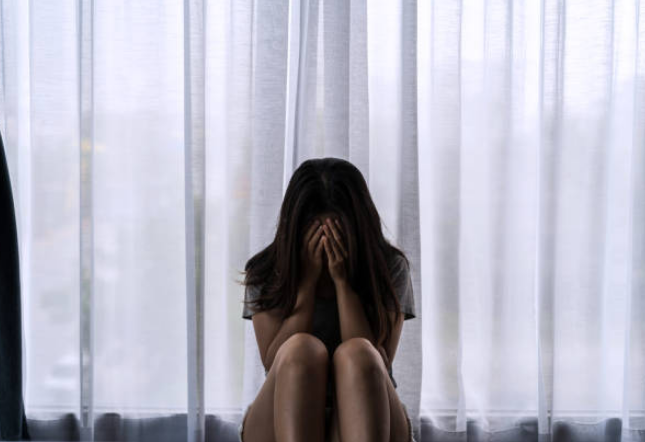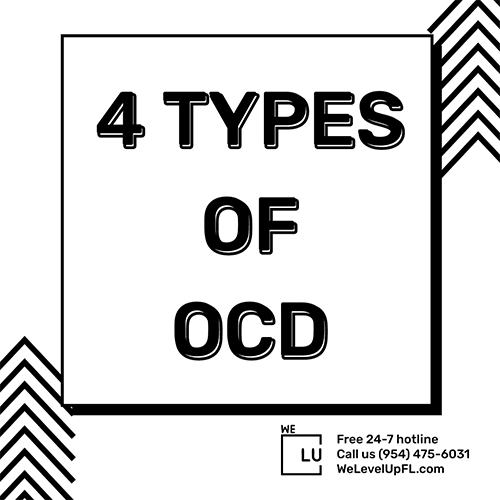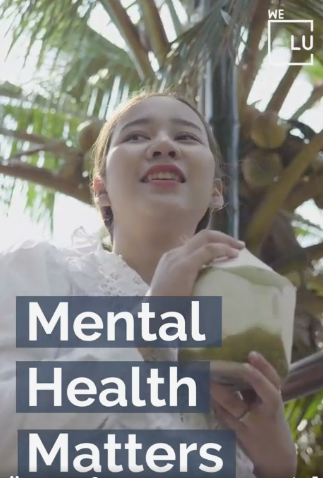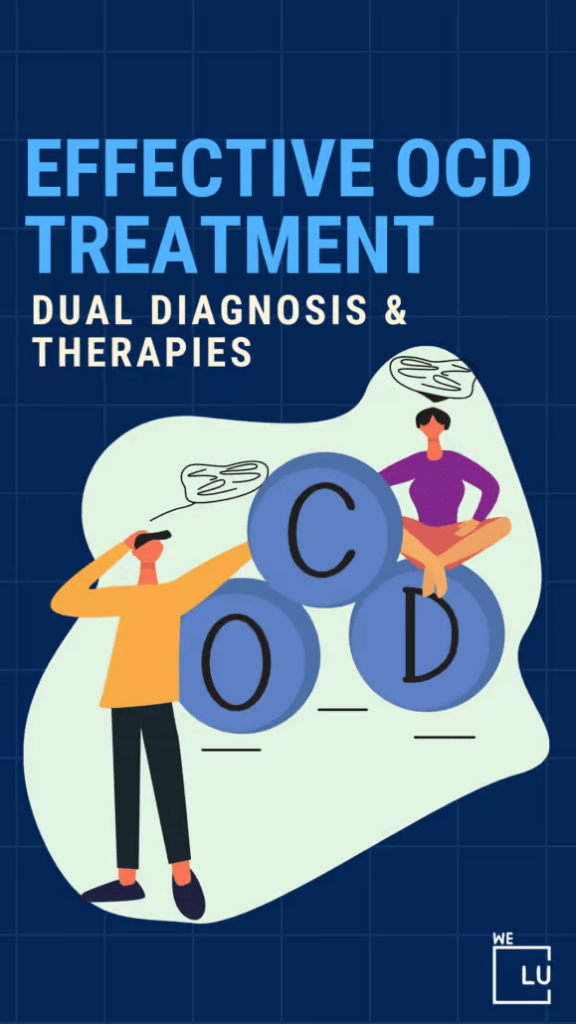What are the 4 Types of OCD?
Obsessive-Compulsive Disorder (OCD) has several subtypes or themes that can appear differently. Even though symptoms of OCD can overlap and change over time, here are four common ones:
- Contamination OCD: Individuals with this subtype are plagued by fears of germs, dirt, or contamination. They may engage in excessive cleaning, avoiding touching particular objects, or washing their hands repeatedly to reduce their anxiety.
- Checking OCD: People with OCD fear something terrible will happen if they don’t check things repeatedly. This could involve checking locks, appliances, or their bodies to ensure everything is safe and secure.
- Symmetry and Ordering OCD: This subtype involves an obsession with symmetry, order, and precise arrangement. Individuals with this type of OCD might feel compelled to arrange objects in specific ways, count things, or align-items symmetrically to alleviate their anxiety.
- Intrusive Thoughts OCD (Pure-O): Pure-O is characterized by intrusive, distressing thoughts, images, or impulses that are often violent, taboo, or irrational. These thoughts can be very distressing, and individuals may engage in mental rituals to try to neutralize them.
It’s necessary to consider that these subtypes are not mutually exclusive and that many people with OCD experience a mix of these themes. Also, not everyone with OCD fits neatly into these categories because the disorder can appear in many ways.
What Type of Disorder is OCD?
Anxiety disorders include obsessive-compulsive disorder (OCD). It’s characterized by intrusive, unwanted thoughts (obsessions) and compulsive rituals of thought or action (compulsions). Because of the distress and disruption it causes daily, OCD can have a devastating effect on one’s ability to function and quality of life. Individuals displaying OCD symptoms should see mental health professionals for diagnosis and treatment.
Can Different Types of OCD be Treated?
Many forms of OCD are treatable. Psychotherapy, medication, and behavioral modifications are the standard approach to treating obsessive-compulsive disorder. Exposure and Response Prevention (ERP) is a subset of cognitive behavioral therapy (CBT) that has shown promise in treating obsessive-compulsive disorder (OCD). In exposure and response prevention (ERP), the person’s obsessive fears are gradually exposed to them, while the person’s compulsive behaviors are blocked.
Selective serotonin reuptake inhibitors (SSRIs) and other medications are frequently used to treat OCD. These drugs can help lessen the impact of obsessive and compulsive behaviors.
Explore effective OCD therapy options. Find guidance and assistance from experienced therapists at We Level Up specializing in OCD and mental health treatment. Begin your journey toward relief by contacting our OCD hotline for a confidential and free consultation.


Skip To:
Learn More:
- OCD Signs and Symptoms
- Is OCD An Anxiety Disorder? Here’s The link
- OCD and Depression: What’s The Link?
- PTSD and OCD
- Is Autism a Mental Health Diagnosis? Addiction and Autism, Symptoms, OCD, Depression & Bipolar disorder
- OCD Therapy Benefits, Inpatient Treatment, Medications & When To Seek Help
- Effective OCD Treatment, Dual Diagnosis & Therapies
- What is Inattentive ADHD? Types, Symptoms, & Inattentive ADHD Treatment
- How to Improve Mental Health? 8 Steps for Mental Wellbeing
- 9 Best CBD Gummies For Anxiety Relief
OCD Fact Sheet
OCD Overview
Obsessions with excessive ideas trigger recurrent behaviors (compulsions). Unreasonable worries and obsessions (also known as compulsive behaviors) are hallmarks of obsessive-compulsive disorder.
OCD frequently centers on ideas like a dread of germs or the requirement to organize objects in a certain way. Symptoms typically appear gradually and change over time. Both conversation therapy and medication are used as treatments.
OCD Symptoms
Behavioral: compulsive behavior, agitation, compulsive hoarding, hypervigilance, impulsivity, meaningless repetition of own words, repetitive movements, ritualistic behavior, social isolation, or persistent repetition of words or actions.
Mood: anxiety, apprehension, guilt, or panic attack.
Whole body: fatigue or sweating.
Also common: food aversion, nightmares, or rumination.
OCD Treatments
- Support group: A place where those pursuing the same disease or objective, such as weight loss or depression, can receive counseling and exchange experiences.
- Cognitive behavioral therapy: A conversation treatment that aimed to change the negative attitudes, actions, and feelings connected to psychiatric discomfort.
- Counseling psychology: A subfield of psychology that handles issues with the self that are connected to work, school, family, and social life.
- Anger management: To reduce destructive emotional outbursts, practice mindfulness, coping skills, and trigger avoidance.
- Psychoeducation: Mental health education that also helps individuals feel supported, validated, and empowered
- Family therapy: psychological counseling that improves family communication and conflict resolution.
OCD Statistics
Obsessive-compulsive disorder, or OCD, is a term that is frequently used in casual conversation. For those who have obtained a clinical diagnosis, OCD is frequently perceived as an unusual trait rather than a severe mental health difficulty. It is frequently used to characterize picky behavior or is mildly neurotic in the public eye.
- Prevalence: Approximately 2-3% of the global population is estimated to have OCD at some point in their lives.
- Gender Differences: OCD affects both genders, but studies suggest that it may be slightly more common in males during childhood while being more evenly distributed in adulthood.
- Age of Onset: OCD often begins in childhood, adolescence, or early adulthood. The average age of onset is around 19 years.
- Comorbidity: About 50% of individuals with OCD also have another anxiety disorder, and up to 40% have major depressive disorder.
- Severity: OCD can range from mild to severe. It’s estimated that around 25% of individuals with OCD have a severe disorder.
- Impact on Daily Life: OCD can significantly impair daily functioning. In some severe cases, individuals may spend several hours daily engaged in compulsive behaviors or experiencing distressing obsessions.
2.5 million
OCD affects 2.5 million adults or 1.2% of the U.S. population.
Source: National Institute on Mental Health
25%
The average age of onset is 19, with 25% of cases occurring by age 14. One-third of affected adults first experienced symptoms in childhood.
Source: ADAA
3x
Women are 3x more likely to be affected than men.
Source: ADAA
What Are the 4 Types of OCD?
The four main types of Obsessive-Compulsive Disorder (OCD) are:
- Checking OCD: Involves persistent fears that something terrible will happen due to not checking something adequately. Common examples include repeatedly checking locks, appliances, or switches to prevent a potential disaster.
- Contamination OCD: Individuals with this type of OCD experience extreme distress and anxiety related to germs, dirt, or contamination. They engage in compulsive cleaning, washing, or avoiding situations they perceive as dirty or contaminated.
- Symmetry and Ordering OCD: This type is characterized by needing things to be in a particular order or arrangement. People with this type of OCD may spend excessive time arranging objects, aligning items symmetrically, or performing tasks in specific patterns.
- Intrusive Thoughts OCD (Pure-O): This type involves distressing, unwanted, and intrusive thoughts or mental images that often revolve around harm, violence, or inappropriate behaviors. People with Pure-O OCD may engage in mental rituals to neutralize these thoughts.

It’s important to note that OCD symptoms can vary widely among individuals, and some may experience a combination of these types. Additionally, some subtypes or variations of OCD exist beyond these four main categories. OCD is a complex and heterogeneous disorder, and individuals may experience obsessions, compulsions, or a combination of both that do not neatly fit into these categories. If you or someone you know is struggling with OCD, seeking professional help is recommended for accurate diagnosis and appropriate treatment.
Types of OCD Intrusive Thoughts
Here are a few examples of types of OCD intrusive thoughts:
- Violent Thoughts: Unwanted thoughts of causing harm to oneself or others.
- Inappropriate Thoughts: Disturbing or socially unacceptable thoughts that go against personal values.
- Sexual Thoughts: Intrusive thoughts of a sexual nature that are distressing.
- Religious or Blasphemous Thoughts: Thoughts that conflict with religious beliefs or involve disrespecting sacred ideas.
- Health-Related Thoughts: Fearful thoughts about getting sick or being contaminated.
- Relationship or Moral Thoughts: Doubts about personal relationships or questioning one’s morality.
- Thoughts of Losing Control: Worries about losing control over one’s actions.
These intrusive thoughts are a hallmark feature of OCD, and individuals with OCD often engage in compulsive behaviors or rituals to alleviate the distress caused by these thoughts. It’s important to understand that having intrusive thoughts is common, but for individuals with OCD, these thoughts become distressing and disruptive to their daily lives. If you or someone you know is struggling with intrusive thoughts and OCD, seeking professional help is advisable.
Get Help. Get Better. Get Your Life Back.
Searching for Accredited Dual Diagnosis Mental Health Centers Near You?
Even if therapy failed previously, or are in the middle of a difficult crisis, we stand ready to support you. Our trusted behavioral health specialists will not give up on you. When you feel ready or just want someone to speak to about counseling alternatives to change your life call us. Even if we cannot assist you, we will lead you to wherever you can get support. There is no obligation. Call our hotline today.
FREE 24/7 Dual Diagnosis Mental Health Services HotlineWhat Are the Different Types of OCD?
Types of OCD Disorders:
- Contamination OCD: Excessive fear of germs, dirt, or contamination, leading to compulsive cleaning or avoidance behaviors.
- Checking OCD: Persistent need to check things repeatedly, such as locks, appliances, or tasks, to prevent potential harm.
- Symmetry and Ordering OCD: Compulsive need for things to be in a specific order or symmetry, often spending excessive time arranging items.
- Intrusive Thoughts (Pure-O) OCD: Disturbing, unwanted thoughts or mental images, such as violent or inappropriate ideas, causing distress.
- Hoarding OCD: Compulsive collecting and inability to discard items, leading to clutter and difficulty in living spaces.
- Health Anxiety (Somatic OCD): Excessive worry about physical health and fears of having serious illnesses, often seeking medical reassurance.
- Relationship OCD (ROCD): Obsessions about the viability of romantic relationships, causing doubts and seeking reassurance about feelings.
- Scrupulosity OCD: Extreme concern about morality, ethics, or religious matters, leading to obsessive thoughts about sin or wrongdoing.
- Magical Thinking OCD: Belief that specific actions or thoughts can influence unrelated events, leading to ritualistic behaviors.
- Counting and Symmetry OCD: The need to count, perform actions in a specific order, or repeat tasks until they feel “right.”
- Sexual Orientation OCD (SO-OCD): Intrusive doubts about one’s sexual orientation, even with no evidence for such concerns.
- Existential OCD: Philosophical or existential doubts about the nature of reality, existence, or the self, leading to distress.
It’s crucial to recognize that while these categories capture common themes, OCD is highly individualized, and many individuals experience a mix of different obsessions and compulsions.
How Many Types of OCD Are There?
Obsessive-Compulsive Disorder (OCD) is a multifaceted mental illness that encompasses various manifestations. Although there are more than four distinct forms of OCD, the decision to focus on these four was made so that readers could gain a clear and comprehensive understanding of the most frequently encountered symptoms of the disorder.
It may be too difficult to cover all the subtypes in a single article, and the depth of information provided for each may suffer. This article aims to help readers understand the diversity within OCD by discussing four well-recognized and distinct subtypes and to help them recognize some of the most common themes experienced by individuals with the disorder.
A single person with OCD might exhibit symptoms that fall into more than one of these categories. The four OCD subtypes discussed here are meant to illustrate the wide variety of experiences people have with the disorder. Additional subtypes of OCD can be learned about by reading up on the disorder and its many forms.

End the Emotional Pain. Get Your Life Back.
Feeling Depressed, Anxious or Struggling with Mental Health Illness? Get Safe Comfortable Mental Health Dual Diagnosis High-Quality Therapy From Counselors That Care. Begin Your Recovery Now.
Hotline (855) 940-6125What Type of Disorder Is OCD?
Obsessive-Compulsive Disorder (OCD) is classified as an anxiety disorder. It’s characterized by recurring, distressing thoughts (obsessions) and repetitive behaviors or mental acts (compulsions) aimed at reducing the anxiety caused by those obsessions. The disorder significantly impacts daily functioning and can lead to considerable distress.
While OCD is categorized as an anxiety disorder, it’s important to note that it also involves elements of thought and behavior patterns that go beyond typical anxiety disorders. The obsessions and compulsions characteristic of OCD often have specific themes and can be more complex than general anxiety symptoms.
What Are the 7 Types of OCD?
The categorization of OCD into specific “types” can vary depending on the source, but here’s a list of seven common types of Obsessive-Compulsive Disorder (OCD):

- Contamination: Fear of germs and compulsive cleaning.
- Checking: Repeatedly checking things for safety.
- Symmetry/Ordering: Need for things to be just right.
- Pure-O: Distressing thoughts and rituals.
- Hoarding: Collecting and inability to discard items.
- Counting: Need to count things or perform actions a certain way.
- Religious/Moral: Obsessions about morality or religion.
While these categories help describe common patterns, many individuals with OCD may experience a combination of these types, and symptoms can vary widely among individuals. If you or someone you know is dealing with OCD, seeking professional help can provide accurate diagnosis and effective treatment strategies.
First-class Facilities & Amenities
World-class High-Quality Mental Health Services & Behavioral Health Substance Abuse Treatment
Rehab Centers TourRenowned Mental Health Centers. Serene Private Facilities. Inpatient Rehab Programs Vary.
Mental Health Helpline (855) 940-6125Proven recovery success experience, backed by a Team w/ History of:
15+
Years of Unified Experience
100s
5-Star Reviews Across Our Centers
10K
Recovery Successes
- Comprehensive Dual-Diagnosis Treatment
- Complimentary Family & Alumni Programs
- Coaching, Recovery & Development Events
- Comfortable Onsite Medical Detox Center
Types of OCD Compulsions
Here are some types of compulsions commonly associated with Obsessive-Compulsive Disorder (OCD):
- Cleaning/Washing: Excessive cleaning due to contamination fears.
- Checking: Repeatedly checking for safety.
- Counting/Ordering: Counting or arranging things in a specific way.
- Repeating Actions: Doing things multiple times to prevent harm.
- Mental Rituals: Silent mental actions to neutralize thoughts.
- Avoidance: Avoiding triggers to reduce anxiety.
- Arranging/Organizing: Rearranging items for comfort.
- Praying/Repenting: Excessive religious rituals or seeking forgiveness.
- Confessing: Sharing distressing thoughts with others.
Remember, compulsions are repetitive behaviors or mental acts aimed at reducing the distress caused by obsessions, even though they often provide only temporary relief and can reinforce the cycle of OCD. If you or someone you know is dealing with these types of compulsions and OCD, seeking professional help is recommended.
Types of Therapy for OCD
Individuals suffering from Obsessive-Compulsive Disorder (OCD) can find relief from their symptoms and enhance their quality of life through various therapeutic approaches. Some of the most common therapeutic approaches for OCD are as follows:
- Cognitive Behavioral Therapy (CBT): This is the most widely used therapy for OCD. Exposure and Response Prevention (ERP), a specific form of CBT, involves gradually exposing individuals to their obsessions and preventing the usual compulsive responses. This helps reduce anxiety and break the cycle of obsessions and compulsions.
- Acceptance and Commitment Therapy (ACT): ACT focuses on helping individuals accept their intrusive thoughts without judgment and commit to behaviors that align with their values, even in the presence of anxiety.
- Mindfulness-Based Therapy: This approach teaches individuals to be present in the moment and observe their thoughts without reacting to them. It can help reduce the distress caused by intrusive thoughts.
- Dialectical Behavior Therapy (DBT): Originally developed for borderline personality disorder, DBT can also be effective for individuals with OCD. It emphasizes emotional regulation, distress tolerance, and interpersonal effectiveness.
- Exposure Therapy involves exposing individuals to their fears or triggers in a controlled environment to help them learn that their anxiety decreases over time without engaging in compulsions.

- Medication: While not a form of therapy, medication can be a part of OCD treatment. Selective Serotonin Reuptake Inhibitors (SSRIs) are commonly prescribed to help manage OCD symptoms.
- Group Therapy: Group sessions provide a supportive environment where individuals can share their experiences, learn from others, and practice techniques together.
- Family Therapy: Family involvement can be crucial, especially for children and adolescents with OCD. Family therapy helps educate family members about the disorder and provides strategies for supporting their loved one’s treatment.
If you’re seeking treatment for OCD, We Level Up Treatment Center offers evidence-based therapies that target the specific types of obsessions and compulsions you’re dealing with, helping you regain control and improve your overall well-being.
Experience Transformative Recovery at the We Level Up Treatment Center.
See our authentic success stories. Get inspired. Get the help you deserve.



Start a New Life
Begin with a free call to a behavioral health treatment advisor. Learn more about our dual-diagnosis programs. The We Level Up treatment center network delivers recovery programs that vary by each treatment facility. Call to learn more.
- Personalized Care
- Caring Accountable Staff
- World-class Amenities
- Licensed & Accredited
- Renowned w/ 5-Star Reviews
We’ll Call You
How to get help?
The We Level Up Treatment Center provides world-class care with round-the-clock medical professionals to help you cope. In addition, we work as an integrated team providing information about signs and symptoms of OCD and other aspects of treatment. Make this your opportunity to reclaim your life. Call today to speak with one of our treatment specialists. Our specialists know what you are going through and answer any of your questions.
Your call is private and confidential, and there is never any obligation.
Popular FAQs about Types of OCD
-
Is OCD a Type of Anxiety?
Yes, OCD is a type of anxiety disorder.
-
What Type of OCD Do I Have?
A mental health professional can help determine the type of OCD you might be experiencing. Call today to speak with one of our treatment specialists.
-
How Many Types of OCD Are There?
There are several recognized types of OCD, including contamination, checking, symmetry/ordering, and intrusive thoughts (Pure-O). The categorization may vary, but these are some common types.
Learn About What Is OCD and Take a look at the 4 Most Common Types of OCD Video
Video Script
There are several categories of OCD, but these 4 types of OCD are the more commonly seen:
Troubling Thoughts
Not all forms of OCD involve obsessive actions. In some cases, OCD primarily consists of intrusive thoughts that interfere with daily life. In this case, these thoughts tend to be more forbidden, about disturbing or uncomfortable topics that cause distress. This form of OCD manifests as:
Intrusive thoughts that are damaging or upsetting.
The shame surrounding troubling thoughts.
Fear of acting on inappropriate thoughts.
Feelings of responsibility for harmful actions.
Fear of harming others, either intentionally or unintentionally.
An ongoing need for reassurance of being a good or worthy person.
Rituals are designed to expel or avoid negative thoughts.
Contamination and Cleaning
A fear of things that might be dirty or a compulsion to clean involves feelings of discomfort associated with contamination.
An obsession with cleanliness, both physical and mental
Fear of disease and biological materials
Avoidance of germ-ridden areas, like bathrooms and medical facilities
Ongoing cleaning of the body, clothing, and physical areas
Washing or cleaning rituals, often related to showering or hand-washing
Ordering and Symmetry
The need to have things lined up, organized, or symmetric in a certain way. It can also involve thinking or repeating sentences or words until the task is completed perfectly.
A compulsive need to organize things in a particular way
An obsession with symmetry using criteria like size or color
Counting of objects, sometimes repetitively
Rituals surrounding organizing objects
Panic or anxiety when things aren’t correctly organized
Persistent, repeated, unwanted thoughts
Involves extreme feelings or worry that you’ll harm yourself or others. To relieve your distress, you might use what’s known as checking rituals.
A compulsive need to check alarm systems, locks, ovens, or light switches
Thinking you have a medical condition like pregnancy or schizophrenia
Persistent fear of harming others or yourself.
Search4 Types Of OCD, Symptoms & Treatment Options. Different Types of OCD Disorders Drug & Alcohol Rehab / Detox & Mental Health Topics & Resources
Sources
[1] NIMH – https://www.nimh.nih.gov/health/topics/obsessive-compulsive-disorder-ocd/index.shtml Learn More: Types of OCD
[2] Obsessive-compulsive disorder. National Institute of Mental Health. https://www.nimh.nih.gov/health/topics/obsessive-compulsive-disorder-ocd/index.shtml. Accessed Sept. 3, 2019. Learn More: Types of OCD
[3] Mental health medications. National Institute of Mental Health. https://www.nimh.nih.gov/health/topics/mental-health-medications/index.shtml#part_149856. Accessed Aug. 13, 2019. Learn More: Types of OCD
[4] AskMayoExpert. Obsessive-compulsive disorder (OCD). Mayo Clinic; 2019. Learn More: Types of OCD
[5] Depression basics. National Institute of Mental Health. https://www.nimh.nih.gov/health/publications/depression/index.shtml. Accessed Sept. 4, 2019. Learn More: Types of OCD
[6] Obsessive-compulsive disorder (OCD). Merck Manual Professional Version. https://www.merckmanuals.com/professional/psychiatric-disorders/obsessive-compulsive-and-related-disorders/obsessive-compulsive-disorder-ocd. Accessed Sept. 3, 2019. Learn More: Types of OCD
[7] Obsessive-compulsive disorder. National Alliance on Mental Illness. https://www.nami.org/Learn-More/Mental-Health-Conditions/Obsessive-compulsive-Disorder/Overview. Accessed Sept. 3, 2019. Learn More: Types of OCD
[8] Suicidality in children and adolescents being treated with antidepressant medications. U.S. Food and Drug Administration. https://www.fda.gov/drugs/postmarket-drug-safety-information-patients-and-providers/suicidality-children-and-adolescents-being-treated-antidepressant-medications. Accessed Aug. 13, 2019. Learn More: Types of OCD
[9] Obsessive-compulsive disorder. In: Diagnostic and Statistical Manual of Mental Disorders DSM-5. 5th ed. American Psychiatric Association; 2013. https://dsm.psychiatryonline.org. Accessed Sept. 3, 2019. Learn More: Types of OCD
[10] Coping with Stress – Centers for Disease Control and Prevention Learn More: Types of OCD